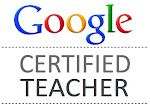In my 31 years as an elementary educator, I have never seen a project more powerful for sharing classroom learning, making global connections, and building a positive digital footprint for young students than having a classroom blog. I recommend every classroom teacher consider flattening the walls via blogging. There are so many benefits!
Educational blogging is also a fantastic way to teach and promote high standards for writing. Students want their writing to get published and educational blogging is a great way to leverage that interest.
I have two educational blogs that I use in our learning. Mrs. Yollis' Classroom Blog is a public blog where classroom events and projects are published. The comment section is where the blog comes to life. Students and parents interact in this online community.
Educational blogging is also a fantastic way to teach and promote high standards for writing. Students want their writing to get published and educational blogging is a great way to leverage that interest.
I have two educational blogs that I use in our learning. Mrs. Yollis' Classroom Blog is a public blog where classroom events and projects are published. The comment section is where the blog comes to life. Students and parents interact in this online community.
My second blog is called Yollis' 365 Blog, and it is a public photo-of-the-day blog. Students, family members, and other classes throughout the world contribute photos and text. The digital images are used to inspire creative stories, spark poetry entries, and share information about hobbies and interests.
Below are TWO videos I've made to help teachers begin blogging with their students.
1. This is a video made by Mrs. Yollis' students called How to Compose a Quality Comment! It offers FIVE tips to help take comments to the next level! I use this video to teach students about content.
2. This is a video made by Mrs. Yollis' students called Tips to Ensure Quality Blogging. It outlines the rules for participation in our classroom blogs and the agreements the students make when publishing on our blogs.
Do you have any questions about blogging for my students?
How has your writing improved through participation on the blog?


















































